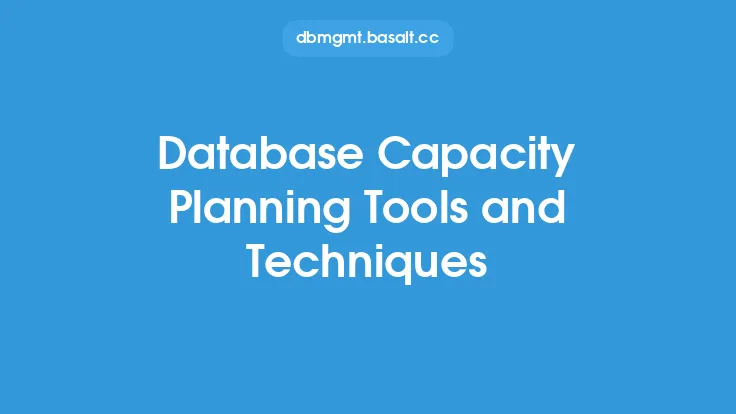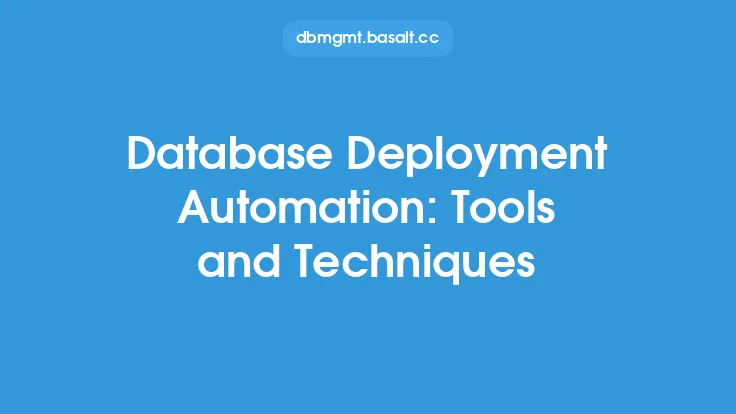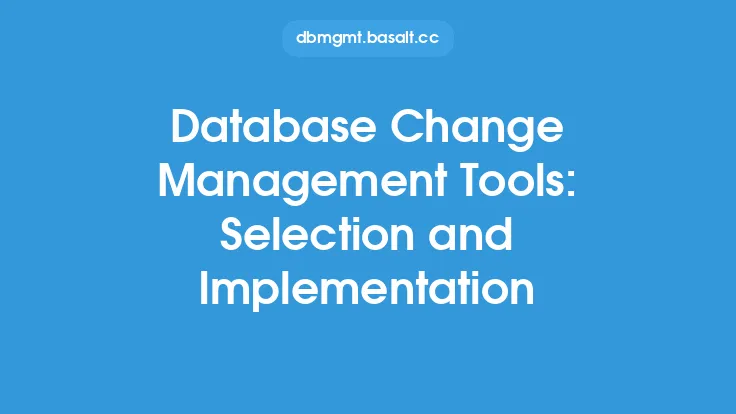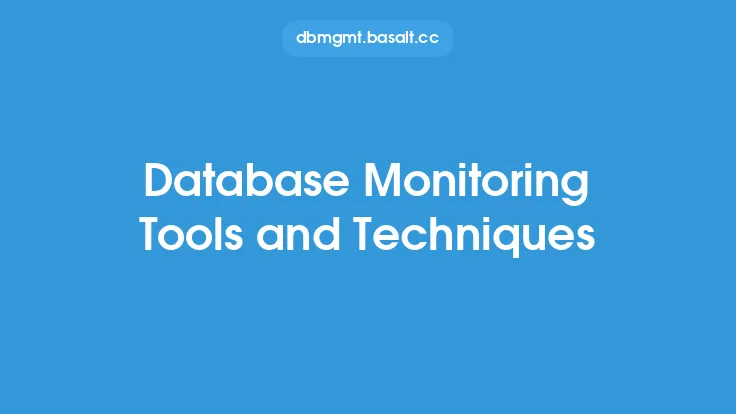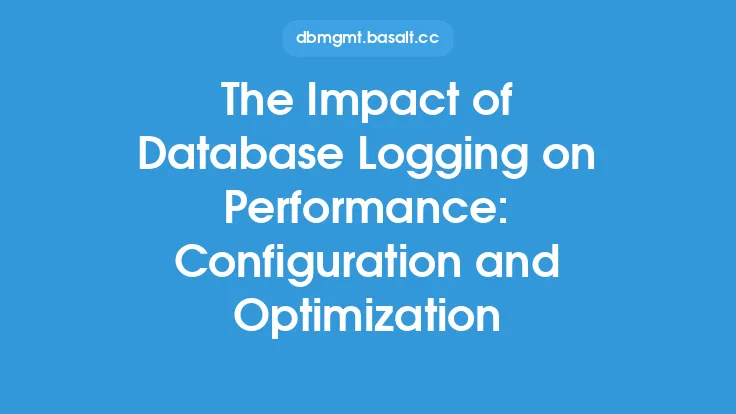Database configuration management is a critical aspect of database administration, as it ensures that database systems are properly set up, maintained, and updated to meet the evolving needs of an organization. Effective database configuration management involves a combination of tools, techniques, and best practices that help database administrators (DBAs) to manage database configurations, track changes, and ensure consistency across multiple database environments.
Introduction to Database Configuration Management
Database configuration management is a process that involves tracking, controlling, and managing changes to database configurations, including database parameters, security settings, and storage configurations. The goal of database configuration management is to ensure that database systems are properly configured, secure, and performing optimally. This involves using a combination of tools and techniques to manage database configurations, track changes, and ensure consistency across multiple database environments.
Database Configuration Management Tools
There are several database configuration management tools available, including commercial and open-source options. Some popular tools include:
- Ansible: An open-source automation tool that can be used to manage database configurations, deploy database changes, and ensure consistency across multiple database environments.
- Puppet: A commercial automation tool that can be used to manage database configurations, deploy database changes, and ensure consistency across multiple database environments.
- Chef: A commercial automation tool that can be used to manage database configurations, deploy database changes, and ensure consistency across multiple database environments.
- Oracle Enterprise Manager: A commercial tool that provides a comprehensive database management platform, including database configuration management, performance monitoring, and security management.
- Microsoft System Center: A commercial tool that provides a comprehensive database management platform, including database configuration management, performance monitoring, and security management.
Database Configuration Management Techniques
In addition to using database configuration management tools, there are several techniques that DBAs can use to manage database configurations effectively. Some of these techniques include:
- Version control: Using version control systems, such as Git, to track changes to database configurations and ensure that all changes are properly documented and approved.
- Configuration templating: Using configuration templates to ensure consistency across multiple database environments and to simplify the process of deploying database changes.
- Automation: Using automation tools, such as Ansible or Puppet, to automate database configuration management tasks, such as deploying database changes and ensuring consistency across multiple database environments.
- Continuous integration and continuous deployment (CI/CD): Using CI/CD pipelines to automate the process of testing, validating, and deploying database changes.
Database Configuration Management Best Practices
To ensure effective database configuration management, DBAs should follow several best practices, including:
- Documenting all database configurations and changes: This includes maintaining a comprehensive inventory of all database configurations, including database parameters, security settings, and storage configurations.
- Tracking all changes to database configurations: This includes using version control systems to track changes to database configurations and ensuring that all changes are properly documented and approved.
- Ensuring consistency across multiple database environments: This includes using configuration templating and automation tools to ensure consistency across multiple database environments.
- Testing and validating all database changes: This includes using CI/CD pipelines to automate the process of testing, validating, and deploying database changes.
- Ensuring security and compliance: This includes ensuring that all database configurations are secure and compliant with relevant regulations and standards.
Database Configuration Management Challenges
Despite the importance of database configuration management, there are several challenges that DBAs may face, including:
- Complexity: Database configurations can be complex and difficult to manage, especially in large and distributed database environments.
- Scalability: Database configurations can be difficult to scale, especially in environments with multiple database instances and complex dependencies.
- Security: Database configurations can be vulnerable to security threats, especially if not properly secured and monitored.
- Compliance: Database configurations must comply with relevant regulations and standards, which can be challenging, especially in environments with multiple database instances and complex dependencies.
Conclusion
In conclusion, database configuration management is a critical aspect of database administration that involves tracking, controlling, and managing changes to database configurations. Effective database configuration management requires a combination of tools, techniques, and best practices, including version control, configuration templating, automation, and continuous integration and continuous deployment. By following best practices and using the right tools and techniques, DBAs can ensure that database systems are properly configured, secure, and performing optimally.

